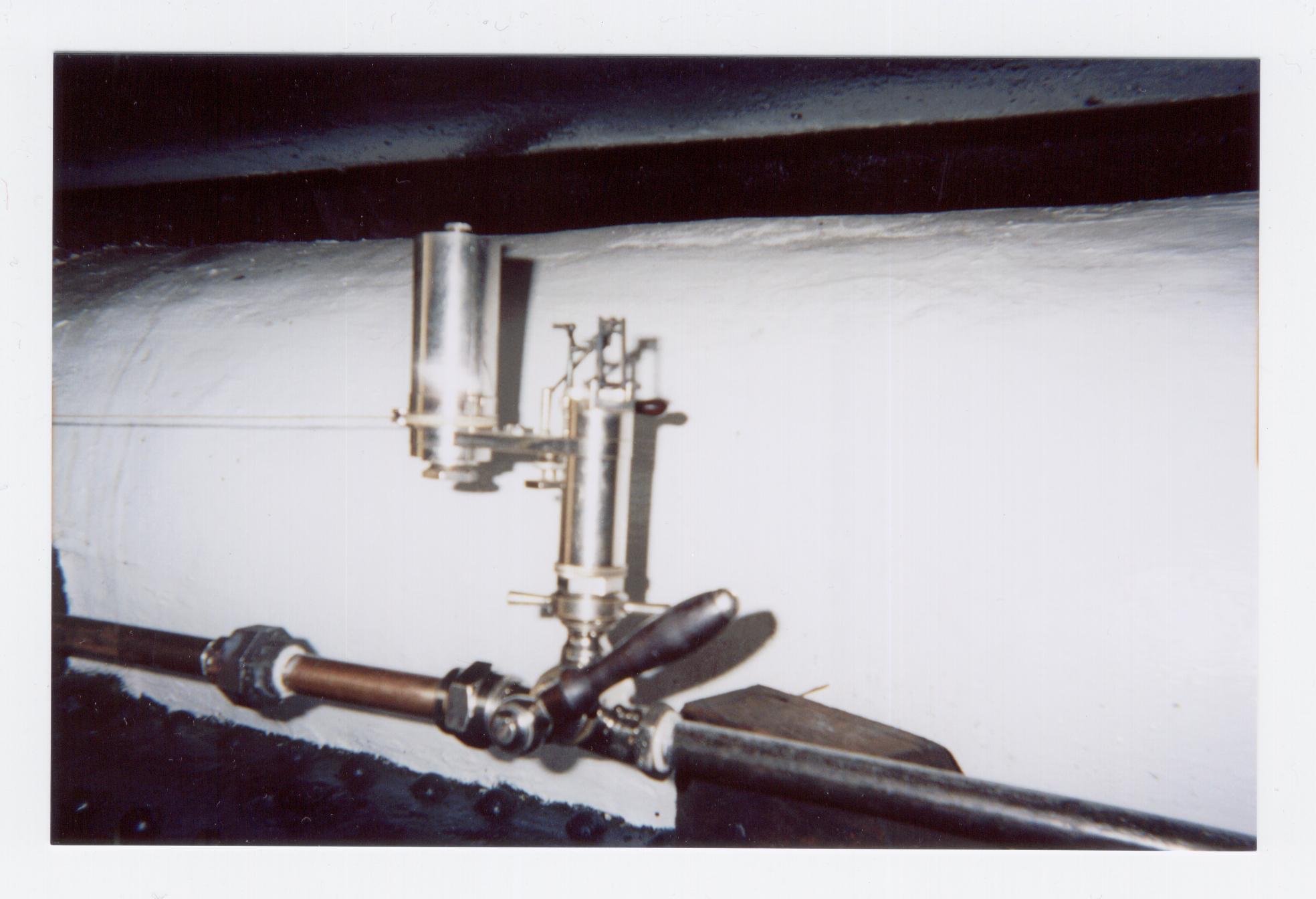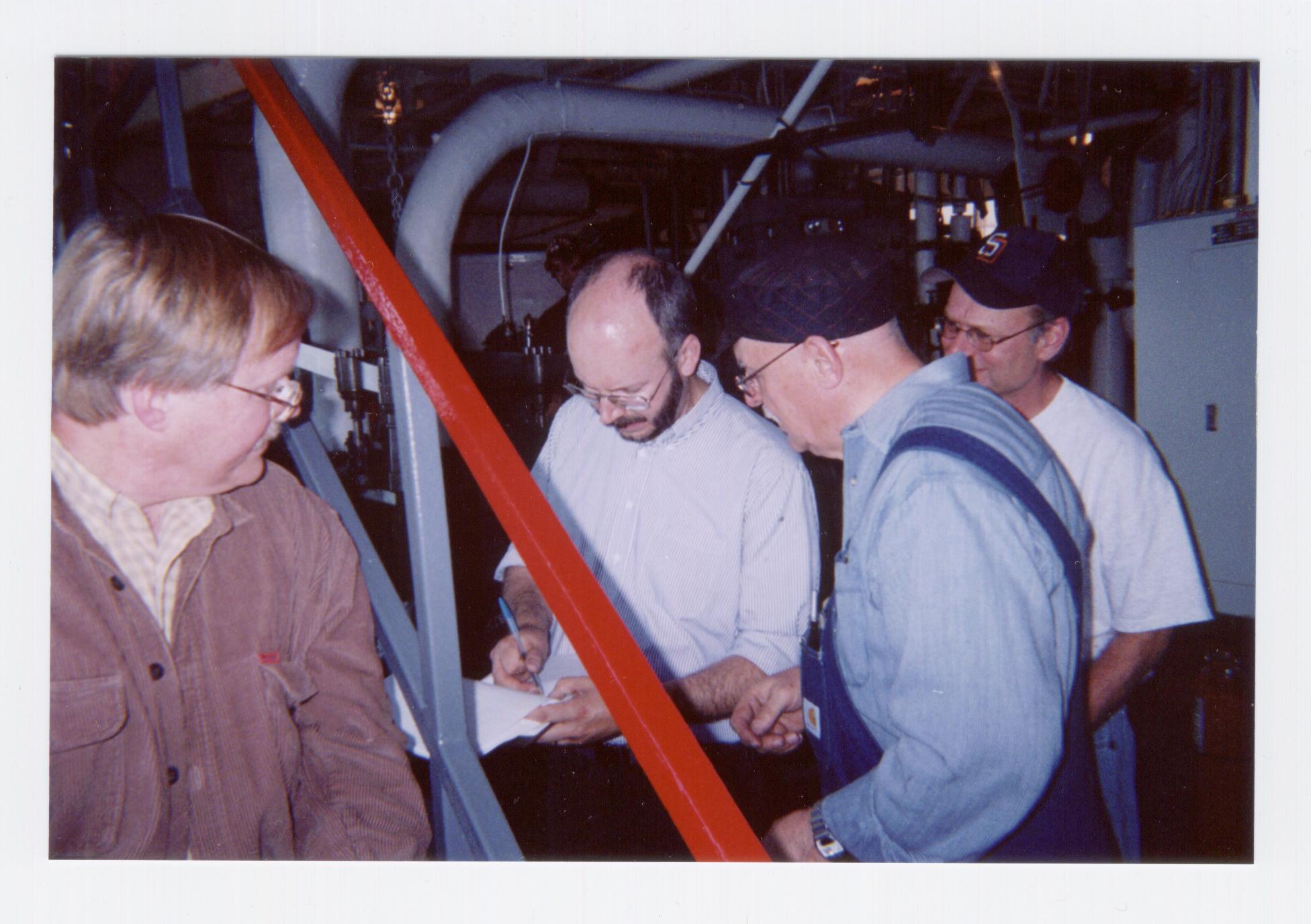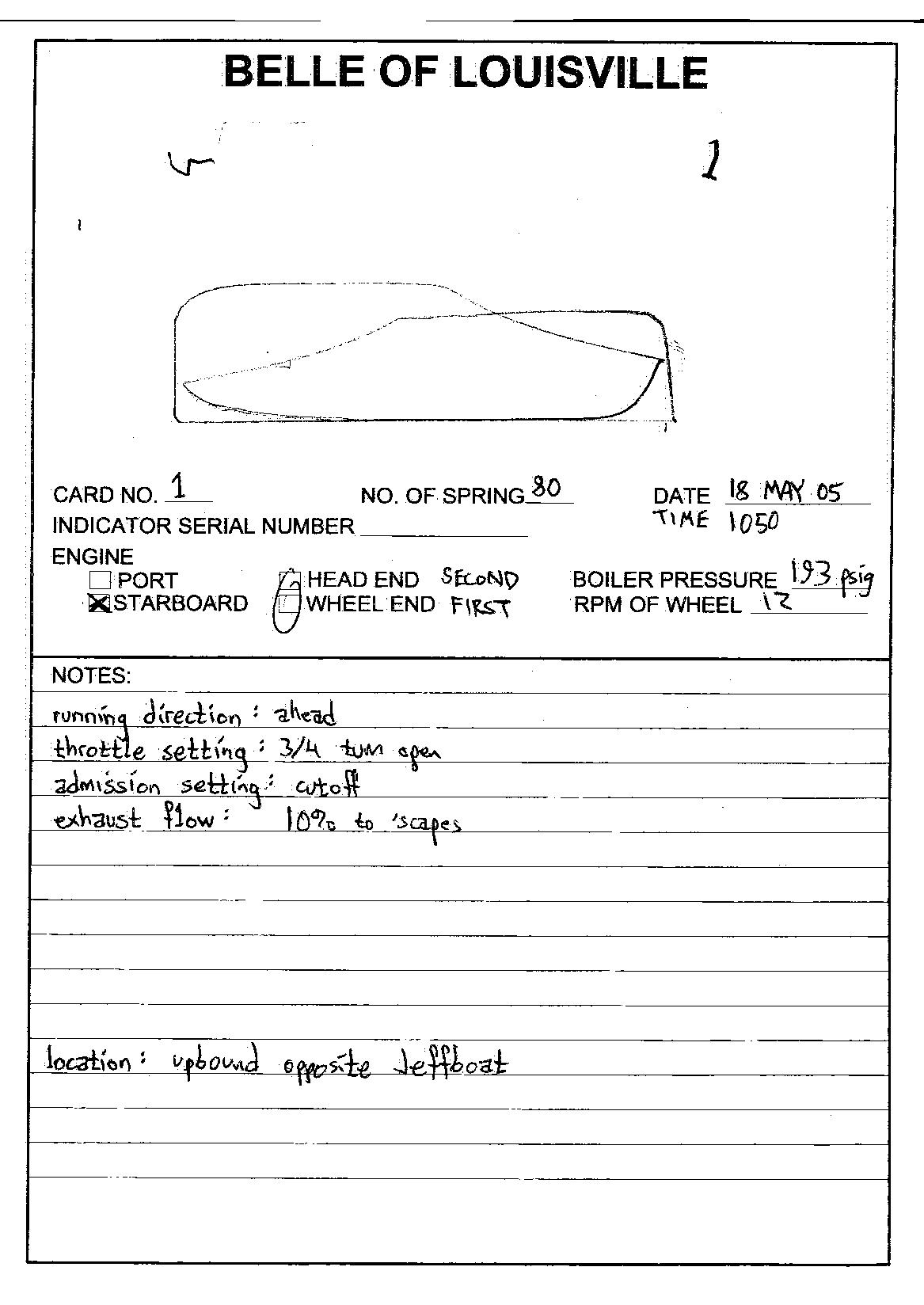Bruce Babcock
uses one of his "steam indicators"
to check the efficiency of the
Belle of Lousiville
18 May, 2005
|
 |
 |
|
Looking forward, along the outboard side of the engine.
Jim McCoy, the engineer, is opening a valve to clear
condensate from the steam line that will carry pressure
from the engine to the indicator. Some of the water is
visible, falling just below the 3-way valve. The engine
did not originally have provisions for attaching an
indicator, so Jim and Joe Kramer attached these lines
especially for this trip.
|
This photo shows the indicator attached to the 3-way
valve in the steam line. The 3-way valve allows taking
diagrams from both ends of the cylinder. You can also
see the cord running from the indicator drum back to the
motion-reducing mechanism.
|
 |
 |
|
Here is the wooden bracket Bruce made for attaching the
cord to the piston rod (left) and the motion-reducing
mechanism. The Rees engine has a stroke over six feet
long, but the indicator drum rotates stop-to-stop with a
pull of only about 8 inches, hence the need for the
motion reducer.
|
Bruce is taking the first diagram as Captain
Alan Bates observes. Captain Bates is a veteran river
boat Captain, and a respected author on steam. This was
the first time he had seen a diagram taken on a riverboat.
As you can tell from Bruce's smile, he was thoroughly
enjoying the work.
|
 |
 |
|
Another view of Bruce taking a diagram, with
Joe Kramer watching. Joe saved the program from
potential disaster when he noticed motion in a
compression fitting and shored up the steam line, to
prevent an accidental break in the line. A wooden block
and two C-clamps comprised the shoring, visible in front
of Joe here, and also in the first and second photos.
|
This photo shows some of the gang analyzing data collected
during the trip to Louisville. From left to right, Bob
Rhode - author, artist, and educator, is working on an
article about the trip; Keith Baylor - whose focus and
commitment in keeping accurate, detailed records of the
entire trip was remarkable and essential; Bruce - who
supplied the instruments and energy to get things done;
and Jim - who kindly let these strangers into his engine
room.
|
 |
This is a copy of one of the data sheets that Keith used
to record the data for each diagram taken. The actual
indicator card is attached at the top; Keith's notations
and observations fill the rest of the page. (To better
appreciate Keith's steadfast attention to detail, you
should know that there is no tachometer in the engine
room - Keith counted revolutions of the wheel while
timing with his wrist watch.) The diagram shows two
traces, one for each end of the cylinder on the
double-acting Rees engine. Each trace records the
pressure in the cylinder (vertical axis) versus the
displacement of the piston (horizontal axis). From the
data recorded on these sheets one can determine engine
horse power, amount of steam consumed by the engine, how
well the valves are operating, and the overall efficiency
of the engine.
|
|
Copyright © MMVIII by William K. Brummett. All rights reserved.
|